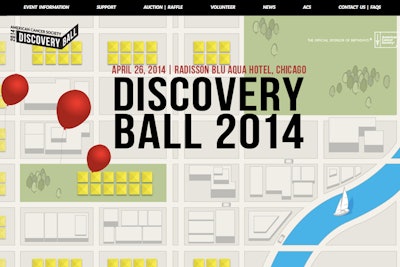
A well-planned Web site can be a highly effective tool in engaging an event's audience, boosting ticket sales, or relaying information to those who weren't able to attend. We asked Web design and event planning pros to share tips on Web site essentials. Here are 10 things to include on your event Web site.
1. A clear description of the event's purpose
It sounds basic, but don't forget to offer a quick event overview. "Event Web sites often lack a simple and clear description of what the event is about and who would get the most value from attending," says Eric Downs of Grain & Mortar, a strategy, branding, and design company.
2. The basics: when and where
"The date, time, and location of the event are the most integral points of information. Don't make people dig for this," says Jessica Kausen, event manager at Squarespace. "Have it prominently available on the home page if you have multiple pages, and make sure it's easy to find anywhere by adding the info to the header or the footer." Using icons such as maps or calendars can also be helpful in relaying an event's basic details, says Brennan McReynolds of Event Farm. And all our interviewees agreed: Make sure your contact information is clearly visible on the site.
3. Sponsor amenities
"Make sure that you are fulfilling sponsor amenities," says Lee Kite, the Chicago-based director of distinguished events at the American Cancer Society. "Your promises to put logos, names of sponsors, lists of sponsors, anyone who's on the leadership committee—all of this is extremely important. And remember that this is a fluid site. As new sponsors come on board, you'll constantly need to update your site. So make sure you have someone managing the information all the time, making sure that it's current and updated, and that if you promised something to a sponsor or an auction donor, you give it to them."
4. Social media links
"No event is an island," McReynolds says. "Nowadays, pre- and post- event engagement are just as important [as the event itself]. By adding social media aspects like Facebook, Twitter, LinkedIn, and Instagram to your Web site, you're enabling attendees to interact with your event in their own personalized way." Social media can also help guide guests back to the main site to pick up tickets. "We've had great luck posting an event's remaining ticket count on Facebook and Twitter," Downs says. "We've seen a direct spike of registrants after posting a tweet like: 'Tickets are going fast—only 50 left!'" On the site for the American Cancer Society's Discovery Ball, which Kite oversees, there's also an option to share descriptions of live auction items on social media.
5. A link to register
Have a clear place on the Web site where guests can purchase tickets or register. And don't forget: different payment methods suit different events. For the American Cancer Society's Skyline Soiree, put on by its associate board, tickets are around $100 and the audience is comprised largely of young professionals. "They do everything online—we don't even send out [paper] invites," Kite says. But for the Discovery Ball, which is sold out through sponsorships, "we've learned that sponsors who are buying a $25,000 table really don't want to pay online. We do make online payment available and it's their choice, but we also make it clear where they can send a check or reach our bookkeeper to take credit card information."
6. Night-of volunteer information
Make it easy for volunteers to read up-to-date information on where to pick up packets, what to wear, the timeline of events, and other pertinent night-of details. "This also gives people the chance to sign up," Lee says.
7. A cohesive theme
If your Web site has a look that's consistent with the event's collateral, including invitations and programs, "it can help tremendously with your overall messaging strategy," Kite says. "A cohesive color scheme not only tells a color story, it tells the event's story."
8. Video
"With the growing availability of image-focused social platforms such as Pinterest and Vine, your audience has become increasingly responsive to images and video," McReynolds says. "They want to be wowed instantly. Do so by replacing monotonous text with engaging images and video." If you do add animation or videos to your site, don't forget to make it mobile-friendly. Kite adds that showing a video of last year's event can help get guests excited for the upcoming iteration and teach them what to expect.
9. An F.A.Q. section
A place where guests can read up on frequently asked questions will prevent planners from having to address the same queries again and again. Consider updating this section as the event draws closer. "As we get questions, we make a decision as to whether that would be a good one to add to our F.A.Q.s," Kite say. "Often visitors will return to an event Web site multiple times to remind themselves of the upcoming event details, and it's important they be clearly presented with everything they need to register or become a sponsor," Downs says.
10. Post-event information
Be sure to update the event's site after the event has wrapped. "We post an event video montage and photos, as well as information on where people can order pictures," Kite says. "We also post a celebratory announcement about how much was raised."


















